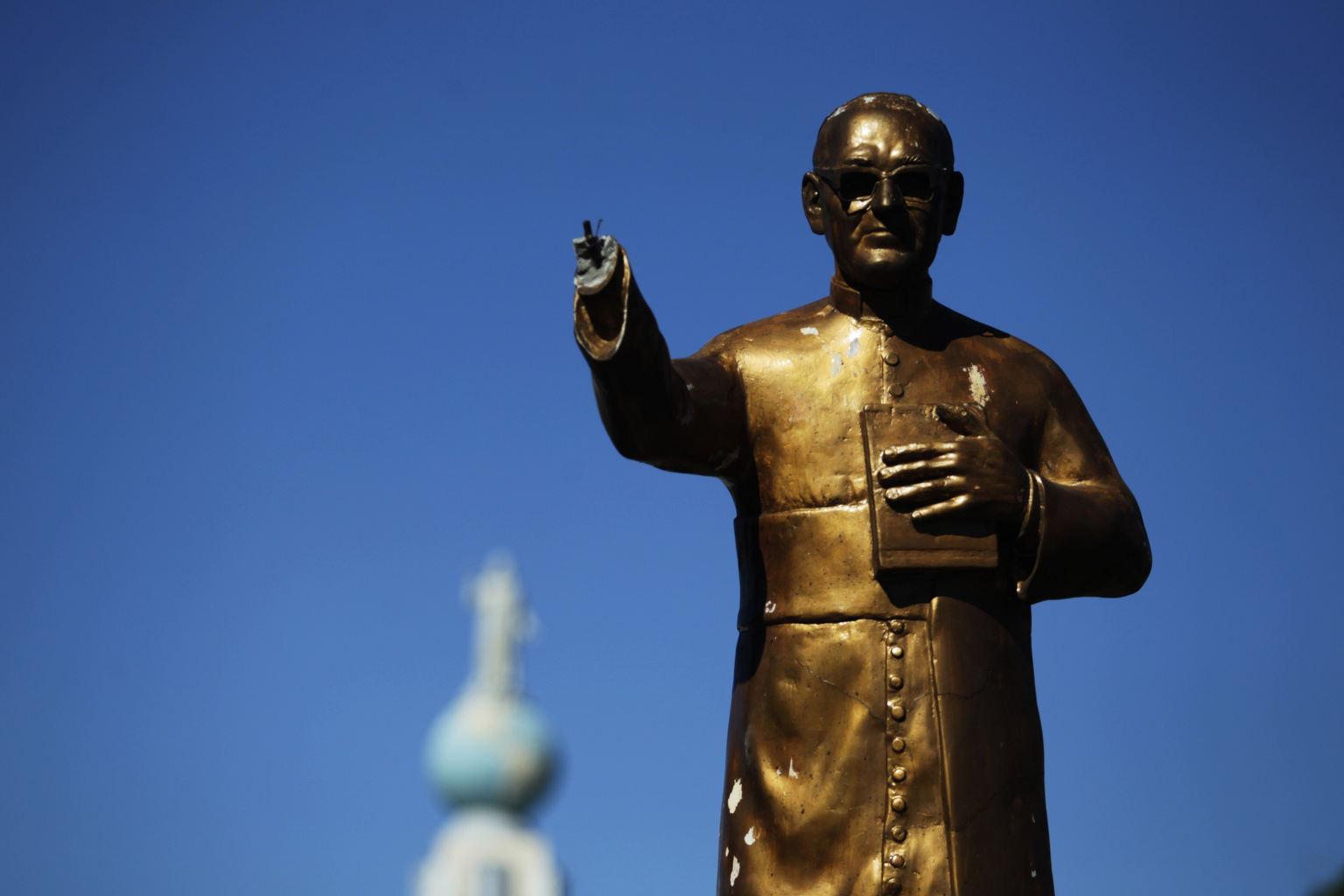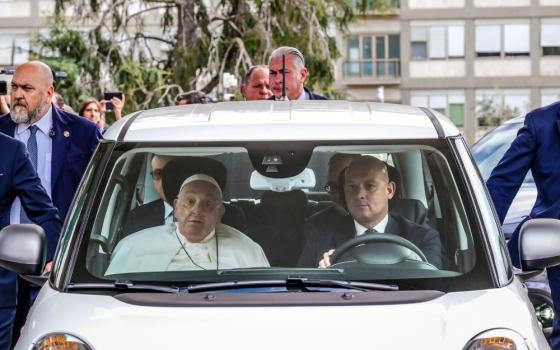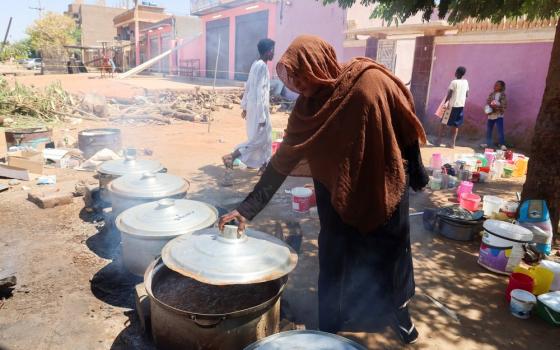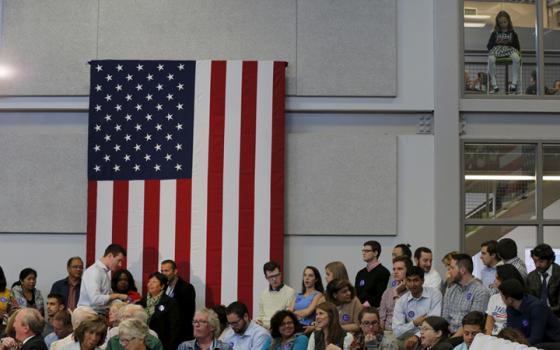
A statue of slain Salvadoran Archbishop Oscar Romero is seen in San Salvador Feb. 3. (CNS/Reuters/Jose Cabezasi)
Fr. Paul Schindler recalls an Oscar Romero who once sat beside him trembling. It was Romero’s first encounter with a group of priests who were furious at the just-announced news that he would be their new archbishop. It was the monthly clergy meeting in early 1977 for the San Salvador archdiocese and at the end, Romero — who hadn’t yet been installed — was asked if he’d like to say a few words.
For all Schindler knew, they would be the last words he’d ever hear from Romero. Discouraged at the prospect of working under him, given all that he’d heard, Schindler had told his bishop back in Cleveland, Ohio, that he’d decided to return home after eight years of parish work in El Salvador.
“He walked to the front of the room and began to speak, and after about 25 minutes, I said to myself, ‘I’m not going anywhere.’ ”
It was Schindler’s first glimpse of something that, until then, had been unknown to him and many others: in the previous two-and-a-half years, while serving as bishop of Santiago de Maria — a rural diocese where the first peasant massacres took place — Romero had begun to change from the more conservative priest they had known in earlier years.
Eva Menjívar came to know Romero during his years in Santiago de Maria. She was one of many nuns who, in the 1960s at the invitation of the archbishop who preceded Romero, had left their orders’ high schools in San Salvador and gone to work in rural parishes that had no priests.
She was assigned to Ciudad Barrios, a small town in eastern El Salvador where Romero was born and grew up. The town was located in the Santiago de Maria diocese, and by the time Romero was named bishop there in 1974, she and her sisters were doing catechetical work, had set up literacy programs and were offering job training in sewing and auto mechanics.
Menjívar says that when people invited Romero to visit their far-flung hamlets he often accepted. She recalls an occasion when campesinos, or farmworkers, in one of those hamlets staged sociodramatic plays they had prepared about several Gospel parables, and then spoke about what the parables meant to them.
At the end they turned to Romero and — as one might ask an expert — said, tell us what these parables really mean. His reply, says Menjívar, was, “I have nothing to add. I’ve learned more about the Bible today than I did when I studied it in the seminary in Rome.”
“We had never seen a bishop draw near to the people the way he did,” says Menjívar . “He’d greet them all, try to speak with them all, and when they had questions for him, he was happy to try to answer them."
Schindler’s experience was similar. “Whenever I’d invite him — and not just to the main church, but to the rural villages — he would come. He was always there with the people. That was his whole thing: to walk with them, to feel with them, to inspire them.”
Menjívar recalls the sisters’ monthly retreats with Romero at the Santiago de Maria diocesan office, and the time in late 1976 when, learning that the National Guard had arrested two teenage catechists in Ciudad Barrios, he went there immediately to demand their release. To insure that they wouldn’t be re-arrested, he took them back to Santiago de Maria, and heard their accounts of being tortured.
Menjívar was later transferred to a parish near Aguilares, where she worked with Jesuit Fr. Rutilio Grande, whose own sainthood process is now underway. On March 12, 1977, when the sisters were at Mass, they were given a note saying that Grande had disappeared. They went straight to Aguilares and, upon arriving, learned that he had been murdered, along with an elderly campesino and a child.
Grande and Romero had become close friends in the early 1970s, when both were living at the seminary in San Salvador. When Romero was named an auxiliary bishop for the San Salvador archdiocese, he asked Grande to organize the installation ceremony. It was during this period that Romero’s conservative stances had drawn the ire of many priests; years later, when he returned as archbishop, it was Grande who stood up for him.
“Rutilio said to us, ‘Yes, he’s conservative. But he’s honest, and he’s someone you can work with,’ ” said Fr. Pedro Declercq, a Belgian missionary who worked with grassroots Christian communities in San Salvador and whose parish house was destroyed by a bomb.
On the night when Grande was killed, Menjívar was tending to his corpse, using a towel to absorb the blood that was trickling out, when Romero arrived at the parish. She said Romero approached the corpse and, after standing in silence for several moments, said, “If we don’t change now, we never will.”
Jesuit Fr. Jon Sobrino, a theologian who was also at the parish that night, opened the door when Romero knocked. Earlier Romero had expressed strong reservations about Sobrino’s writings on Christology, but later Sobrino was one of the people Romero consulted when preparing his pastoral letters as archbishop.
Sobrino says that when Romero was murdered three years later, “immediately people began speaking of him as an exceptional person and Christian. In the funeral Mass we held for him at the UCA [Central American University], Ignacio Ellacuría said, ‘In Archbishop Romero, God has passed through El Salvador.’ And in those days Bishop Pedro Casaldáliga wrote his poem, ‘Saint Romero of the Americas, our pastor and martyr.’ The people spontaneously proclaimed him a saint.” In 1989, Fr. Ellacuría was assassinated himself, along with five other Jesuits and two women at the UCA.
When the Vatican ratified Romero’s status as a martyr, Schindler said, “The people in the parish have been waiting and waiting for this. They hold him as a saint, and they’ve always held him as a saint, and now that the pronouncement has been made, they’re going to be overwhelmed.”
Menjívar said when she heard the news, “I felt great joy — and at the same time, I thought to myself, I hope this will be the occasion for those who killed him to be converted.”
[Gene Palumbo is a freelance journalist based in San Salvador. He also teaches at the Casa de la Solidaridad, a semester-long study-abroad program for U.S. university students.]



